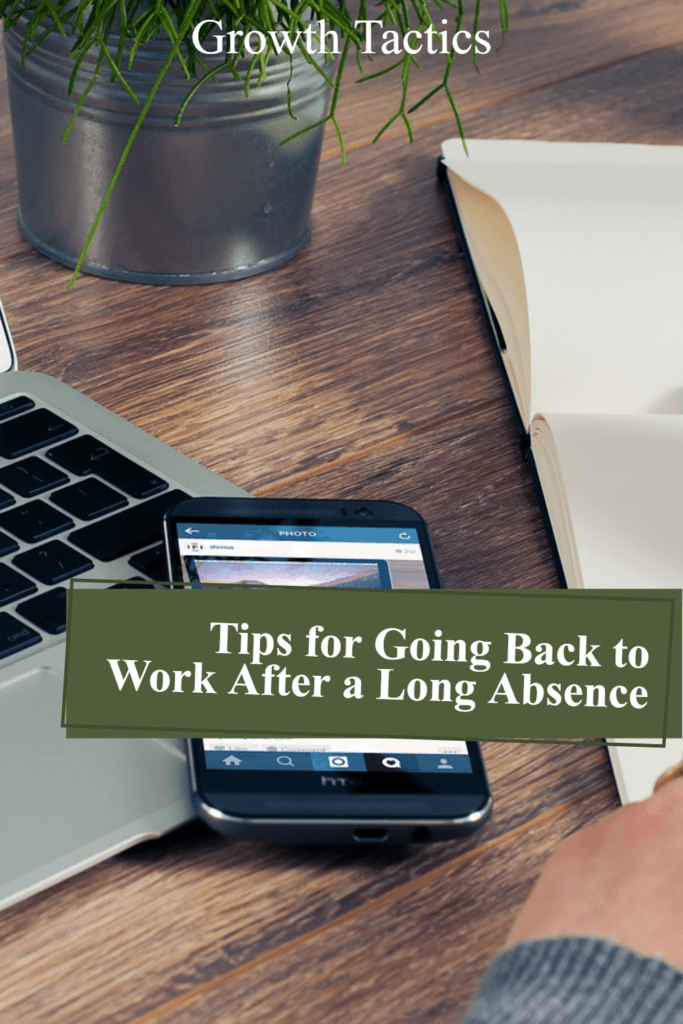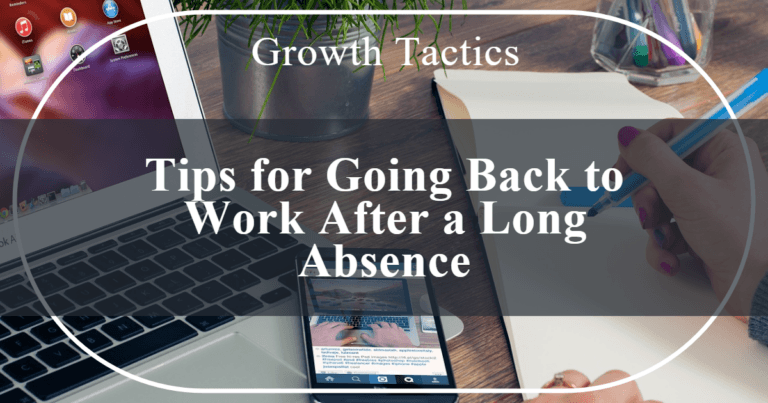Are you going back to work after a long absence? It can be daunting to navigate the job market and find your footing again. However, with the right tips and strategies, you can increase your chances of success and land that dream job. In this article, we will explore the best ways to reenter the workforce and make yourself an asset to potential employers.
Jump To Section
Assessing the Job Market and Career Paths
To truly understand the current job market, it’s important to conduct thorough research and gather relevant information. Explore industry publications, online resources, and job listings to get a sense of the trends, demands, and opportunities available. Pay attention to any changes that may have occurred in your field during your absence, such as new technologies or evolving job roles.
Once you have a sense of the job market, take the time to identify potential career paths that align with your interests, skills, and experiences. Reflect on your past work experience and things you may have done in your time off that can be translated into new roles or industries. Look for any emerging or niche markets that may offer exciting prospects. Don’t be afraid to reach out to professionals in these fields to gain insights and advice.
Updating Your Resume and Cover Letter
Your resume is a snapshot of your professional experience, skills, and accomplishments. When updating your resume after a long break, it’s essential to highlight any relevant work experience or skills acquired during that time. Include any part-time work, freelance projects, or volunteer positions that demonstrate your commitment and dedication to staying engaged with your industry.
Consider incorporating a skills section in your resume to showcase transferable skills that can be valuable in your new career path. These can include communication, problem-solving, project management, or leadership skills. Be sure to tailor your resume for each job application, highlighting the specific qualifications and experiences that are most relevant to the position.
Similarly, your cover letter should be customized to each job application. Use it to explain your career break in a positive light, emphasizing the skills and knowledge gained during that time. Share how your experiences have shaped you and made you a stronger candidate. This is an opportunity to stand out and show potential employers your unique value proposition.
Addressing an Employment Gap on Your Resume
Addressing employment gaps on your resume is a crucial part of your reentry strategy. I’ve helped many people tackle this challenge, and here’s what works best:
Be honest and upfront about your gap. List it on your resume with clear dates and a straightforward title like “Career Break” or “Family Care Period.” This shows integrity and confidence in your journey.
Next, briefly explain how you used this time. Did you learn new skills? Volunteer? Care for family? Whatever you did, it shaped you and added value to who you are now.
Remember, your gap is part of your unique story. It doesn’t define you, but it can set you apart. Use it to show how you’ve grown and what fresh perspectives you bring to the table.
Networking and Building Connections
Networking is a powerful tool when reentering the workforce. Cultivate your professional network by reaching out to former colleagues, mentors, and industry professionals. Let them know about your intention to return to work and inquire about any potential job opportunities or leads. Attend networking events, industry conferences, and online forums to connect with individuals in your desired field.
When networking, approach conversations with genuine curiosity and a willingness to learn from others. Share your experiences and goals, but also listen attentively to others’ insights and experiences. Building meaningful connections can open doors to hidden job opportunities and provide valuable guidance from individuals who have walked a similar path.
Enhancing Your Skills and Taking Advantage of Educational Opportunities
In a constantly evolving job market, it’s crucial to keep your skills up to date and stay informed about industry trends. Consider enrolling in courses, workshops, or certification programs that align with your career goals and enhance your expertise. Online platforms and educational institutions offer a wide range of options to fit your schedule and budget.
Additionally, engaging in volunteer work or taking on contract projects can provide hands-on experience, expand your network, and help you develop new skills. These opportunities can bridge the gap in your resume and demonstrate to potential employers that you have remained active and adaptable during your break.
Make it a habit to stay informed through industry publications, blogs, and podcasts. Subscribe to relevant newsletters and follow thought leaders on social media to continuously expand your knowledge and demonstrate your commitment to professional development.
Navigating the Job Search and Interview Process
When actively searching for a job, it’s important to stay organized and methodical in your approach. Keep track of job listings, application deadlines, and any follow-up actions required. Leverage online job portals, professional networks, and industry-specific platforms to find job opportunities that match your career goals and interests.
Tailor your application materials to each job you apply for, ensuring that your resume, cover letter, and any other required documents reflect your qualifications and demonstrate your fit for the role. Consider seeking feedback from trusted peers, mentors, or career coaches to refine your application materials and make a memorable impression.
Prepare for job interviews by researching the companies you’re applying to. Gain a solid understanding of their mission, values, and recent developments. Anticipate common interview questions and rehearse your responses, focusing on how your skills, experiences, and career break have prepared you for the role. Emphasize your ability to adapt, learn quickly, and bring unique perspectives to the workplace.
Addressing Employment Gaps in an Interview
Be confident and honest. Don’t shy away from discussing your gap. Instead, use it as a chance to show your growth. Prepare a brief, positive explanation. Maybe you learned new skills, volunteered, or cared for family. Whatever you did, it shaped you.
In my experience, interviewers respect candor. They want to know you used your time well. So, tell them how your break made you a better worker. Did it teach you time management? Problem-solving? Resilience? Share that. Own it, and use it to show why you’re the best fit for the job.
Overcoming Challenges of Returning to Work
Going back to work after a long absence can come with its own set of challenges. It’s important to be aware of these potential obstacles and develop strategies to overcome them. By addressing these challenges head-on, you can navigate the reentry process more effectively. Here are some common challenges and tips for overcoming them:
1. Confidence and Self-Doubt
After an extended absence from the workforce, it’s natural to question your skills and abilities. Self-doubt can hinder your confidence and impact your performance in job interviews and even at work. To overcome this challenge:
- Remind yourself of your past accomplishments and the skills you possess.
- Focus on your strengths and the unique perspective you bring as a result of your break.
- Engage in positive self-talk and surround yourself with a supportive network of friends, family, and mentors who can encourage and uplift you.
- Seek out professional development opportunities, such as courses or workshops, to bolster your confidence and enhance your skills.
- Practice interviewing and participate in mock interviews to build confidence and refine your responses to common questions.
2. Technology and Industry Changes
During your absence from the workforce, there may have been significant advancements in technology or changes in your industry. Adapting to these changes can be overwhelming, but it’s crucial to demonstrate your ability to stay current. Consider these strategies:
- Take the time to research and familiarize yourself with the latest technologies and industry trends.
- Seek out online tutorials, webinars, or workshops that can help you learn new skills and technologies.
- Network with professionals in your industry to gain insights and updates on the changes that have occurred.
- Include any relevant technology or software skills on your resume, even if they were acquired during self-study or personal projects.
- Emphasize your ability to quickly learn and adapt to new technologies and industry changes during interviews.
3. Work-Life Balance
One of the challenges of returning to work after an absence is adjusting to a new routine and balancing work obligations with personal responsibilities. Consider these tips to help maintain a healthy work-life balance:
- Communicate openly with your employer about your priorities and potential flexibility in your work schedule.
- Set boundaries and establish a schedule that allows ample time for personal and family commitments.
- Delegate tasks and seek support from family members or professional services when necessary.
- Prioritize self-care and make time for activities that help you relax and recharge.
- Stay organized and use time management techniques to maximize productivity during work hours.
4. Addressing Career Gap in Job Applications
Many job seekers returning to work after a long absence worry about addressing the career gap in their job applications. Here are some tips to handle this challenge:
- Be honest and transparent in your application materials about your career break.
- Highlight any relevant experiences, skills, or personal projects you pursued during your time away.
- Frame your career break as an opportunity for personal growth, learning, or caregiving responsibilities, emphasizing the skills you developed during this period.
- Emphasize any part-time work, gig opportunities, or freelance projects you undertook during your absence.
- Leverage your network and personal connections to bypass the initial automated screening and get your application in the hands of a hiring manager who can better understand your situation.
5. Updating Professional Network
After a long absence, it’s common for your professional network to have changed. Former colleagues may have moved on to new companies, and connections may have become less active. Rebuilding and updating your professional network is crucial. Consider these strategies:
- Attend networking events, industry conferences, and workshops to meet new professionals in your field.
- Leverage online platforms, such as LinkedIn, to reconnect with former colleagues and make new connections.
- Seek out informational interviews to gain insights into different companies and industries.
- Join professional organizations and associations related to your field to expand your network and access resources and job opportunities.
Overcoming the challenges of returning to work requires patience, perseverance, and a proactive approach. With the right mindset and strategies in place, you can successfully overcome these hurdles and reestablish a fulfilling career. Remember to give yourself time to adjust, celebrate small victories along the way, and leverage your experiences to your advantage. Good luck on your journey back into the workforce!
Summary:
- Assess the job market and explore different career paths before reentering the workforce.
- Update your resume and cover letter to highlight relevant skills and experience.
- Network and build connections to increase your chances of finding job opportunities.
- Enhance your skills through educational opportunities and stay updated with industry trends.
- Navigate the job search and interview process with confidence, emphasizing your skills and experiences gained during your career break.
Remember, going back to work after a long absence is a journey, but with the right strategies, you can successfully land a new job and find your place in the ever-evolving job market. Good luck!


